TechRadar Verdict
The XGIMI MoGo 3 Pro is certainly one of the better portable projectors on the market. It can project a surprisingly bright image onto walls and screens, and does an admirable job against ambient lighting. When darkness falls, the picture quality improves dramatically, making it a boon for movie nights at home. Google TV gives access to all the apps you could ever need, but no built-in battery immediately goes against the whole idea of portability. However, it can be run off an external power bank or an optional PowerBase stand if you do take it on the road. The built-in speakers aren’t much to shout about, but external connectivity can rectify this. As portable projectors go, it is still up there among the better options, but stretching your budget will get a more accomplished performer.
Pros
- +
Picture holds up well in ambient lighting
- +
Google TV OS with a comprehensive selection of apps
- +
Compact and lightweight
Cons
- -
No built-in battery
- -
Integrated speakers are poor
- -
Picture suffers in really bright conditions
Why you can trust TechRadar
XGIMI MoGo 3 Pro review: Two-minute review
Chinese electronics brand XGIMI is on a continued mission to be the brand of choice when searching for a projector, hoping to lure you away from the likes of Samsung, BenQ or LG in the process. The MoGo 3 Pro, released alongside the much higher-end Aura 2 4K UST projector towards the end of 2024, certainly has a resumé to suggest it’s in with a fair shot of becoming one of the best portable projectors: full HD resolution, 450 ISO lumens brightness, Google TV and Netflix onboard and, of course, a portable design. And yes, I recognize XGIMI has diverted away from the design of the previous two MoGo projectors and has instead adopted something akin to Samsung’s The Freestyle projector.
Admittedly, the new XGIMI MoGo 3 Pro’s new look does make it a lot more portable and it has added practical benefits. The cylindrical design allows the projector lens to remain covered up when it’s not in use and it can be tilted through a 130º angle. XGIMI claims this allows the projector to beam onto the ceiling but, in my use, I wasn’t able to do so without physically angling the whole projector unit itself. A full 180º of tilt would allow it to perform better in this regard, if that’s what you’re looking for in a projector.
Images projected onto a wall using the XGIMI MoGo 3 Pro are of excellent quality, although you will want to dive into the picture settings to make some adjustments for the best results. Out of the box, images could look washed out and overexposed, but after diving into the albeit limited picture settings and making a few adjustments, I found that the projected images were able to deliver good color and contrast. I was impressed with its ability to combat some bright ambient light filtering into my testing room, too. Naturally, when the lights went down, the images projected onto my wall became much clearer.
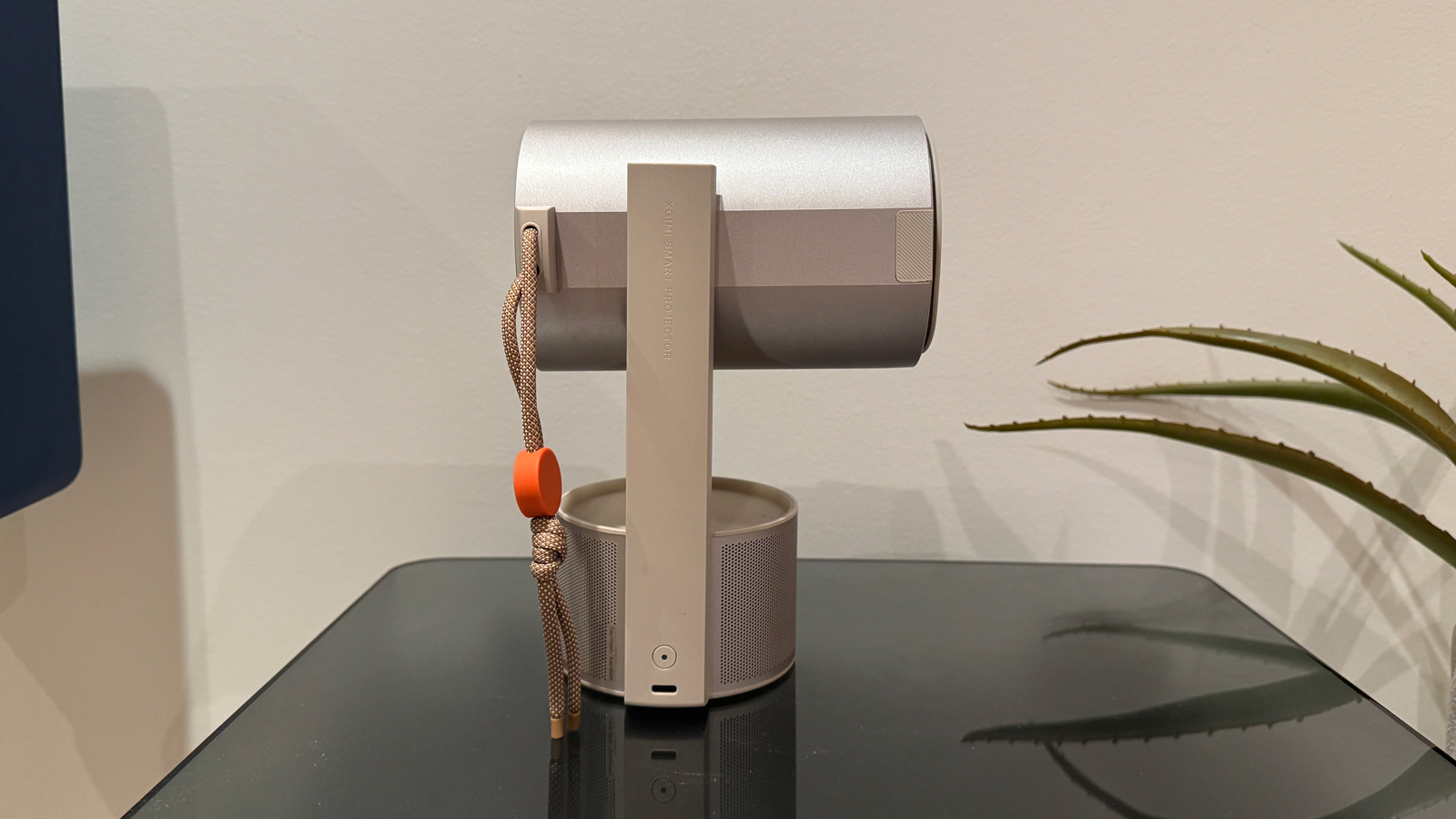
Because the MoGo 3 Pro is a portable projector it needs to rely on its built-in speakers for sound, which is where things get less positive. The XGIMI MoGo 3 Pro has 2 x 5W Harman Kardon speakers built in which, sadly, fail to deliver anywhere near a cinematic experience, despite XGIMI's claims. Dolby Audio and Dolby Digital Plus are both supported formats, but it adds little to what is an overall unengaging sound. For casual viewing with friends, family or even by yourself, it can pass, but if you’re planning on movie nights when you’re away camping or on holiday, for example, then you’ll likely be disappointed. You can connect a Bluetooth speaker to help boost things on the audio front, and a Mini HDMI connection is onboard with ARC support, meaning you can connect a soundbar, for example, using a Mini HDMI-to-HDMI cable. But if you’ve taken the MoGo 3 Pro away on a camping trip, you’re unlikely to have access to a full-fat external audio system.
The XGIMI MoGo 3 Pro also doesn’t have a built-in battery, which naturally can also affect its portability. If you know you’re going to want to take it somewhere where a power outlet won’t be accessible, then you can connect a USB-C power bank with a minimum power output of 65W, or you can buy the optional PowerBase stand, which not only raises the projector off the ground or a small table, but has its own built-in battery to keep it powered. XGIMI says the stand allows you to “continuously play a full-length movie without interruption,” although I found that would be the case only if said movie is 2.5 hours or less.
The other disappointing aspect I found when using the XGIMI MoGo 3 Pro was that it could be slow in use. Volume adjustments using the remote control took a few seconds to register; navigating around the main home page regularly suffered from lag and I even found when trying to watch a particularly fast moving scene from The Incredibles on Disney+ that the projector just completely crashed. I should stress that this was an isolated incident that I couldn’t repeat with other fast-motion content such as sports.
The XGIMI MoGo 3 Pro projector is, ultimately, a good option for anyone who wants big-screen thrills when on the go or perhaps as an option for a second bedroom at home in place of installing a TV. Keep in mind when comparing projectors, the 450 ISO lumens from the MoGo 3 Pro is about equivalent to 500 ANSI lumens. It does well against its main competition, Samsung’s The Freestyle projector, particularly when it comes to brightness. But, if your budget can stretch, you’ll find greater performance from the likes of the 4K RGB Laser equipped LG CineBeam Q.
XGIMI MoGo 3 Pro review: Price & availability
- Launched on September 6, 2024
- List price of $449 / £429 / AU$1,099
- Optional accessories cost extra
The XGIMI MoGo 3 Pro was announced and officially launched at IFA Berlin on September 6, 2024, alongside the Aura 2 4K UST projector. It’s available to buy now for $449 / £429 / AU$1,099 for the standalone projector. You can buy it bundled with the PowerBase stand for $499 / £499 / AU$1,199
You can also pick up an optional carry case for the MoGo 3 Pro projector, which is only available in green, for $69 / £59 / AU$99.
The XGIMI MoGo 3 Pro portable projector’s list price is significantly less than the Samsung The Freestyle projector in the US, UK and Australia. However, Samsung’s projector does have greater HDR support, with HDR10+ available. The MoGo 3 Pro maxes out at ‘standard’ HDR10, although as we said in our Samsung The Freestyle projector review, “I didn’t see much of a picture quality difference when viewing in HDR from standard HD format”, so the MoGo 3 Pro’s lack of extended support isn’t necessarily a mark against it.
XGIMI MoGo 3 Pro review: Specs
| Screen size support: | 40 to 200 inches |
| Brightness (specified) | 450 ISO Lumens |
| HDR support: | HDR10 |
| Optical technology: | LED, DLP |
| Smart TV: | Google TV |
| Connections: | Micro-HDMI, USB-A, USB-C (power), Bluetooth 5.1 |
| Dimensions: | 8.1 x 3.7 x 3.7 inches / 204.9 x 95 x 95mm (H x W x D w/integrated stand) |
| Weight: | 2.42lbs / 1.1kg |
XGIMI MoGo 3 Pro review: Design & features
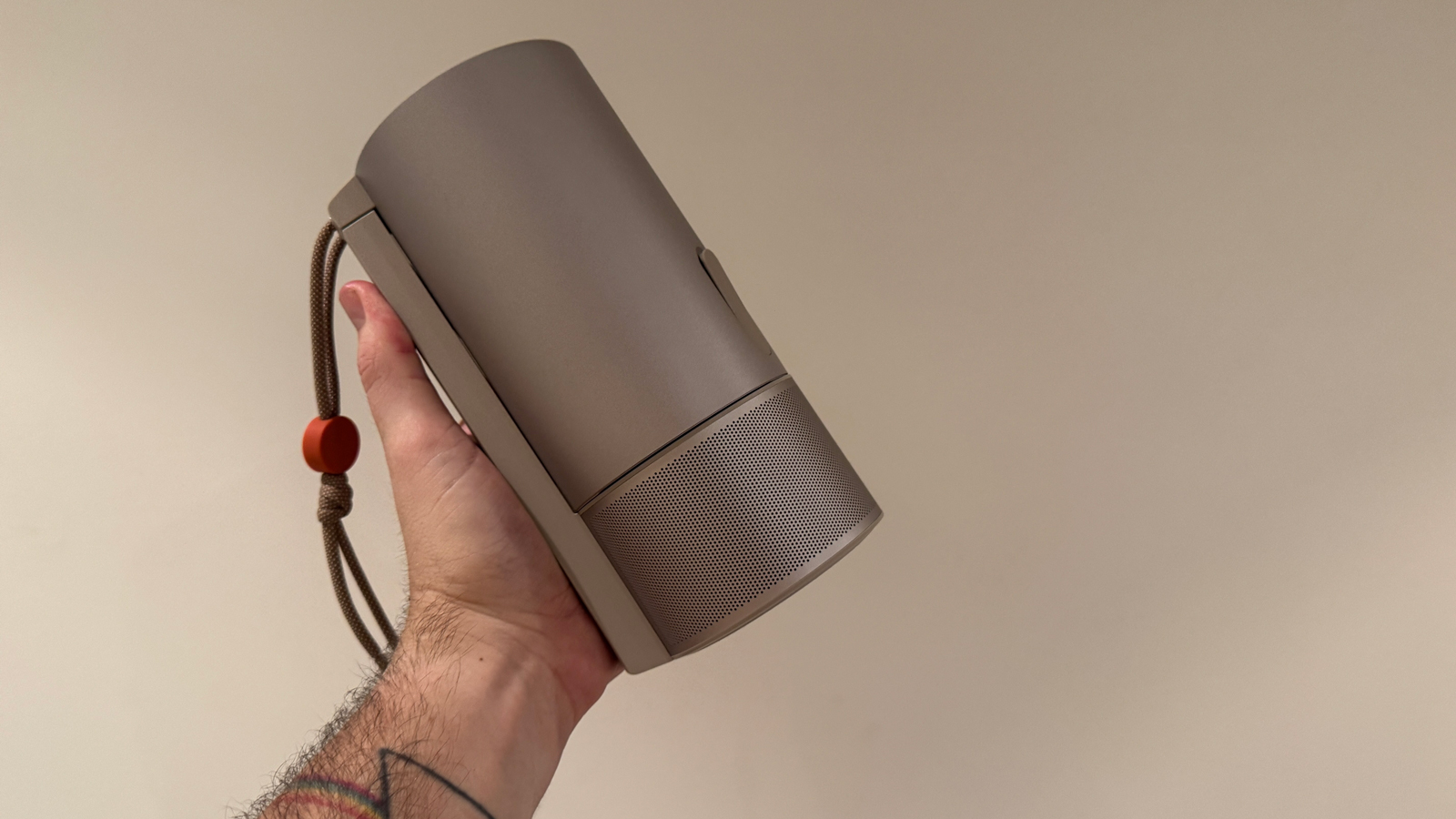
- Compact and lightweight
- Google TV interface
- Can double up as a Bluetooth speaker
The XGIMI MoGo 3 Pro sports a cylindrical form factor and is finished in an anodized silver aluminum color. It’s lightweight at just over one kilogram, making it a breeze to not only move around your home, but to throw into a bag to take on the road with you. The main projector unit itself features an integrated stand, which also houses the built-in speaker system.
When connected to power, the MoGo 3 Pro turns on as soon as you lift it up to separate it from its stand. You can then tilt it through 130º to project an image onto a wall or screen. Alternatively, when you lift the projector from its integrated stand to power it on, you can leave it in this position, where it will light up in one of three selectable colors. In this mode, you can use it as a nightlight or you can stream music to it via Bluetooth, and you can select an option that will see the light pulse – this is more of a flickering of the light rather than it moving in time with the music.
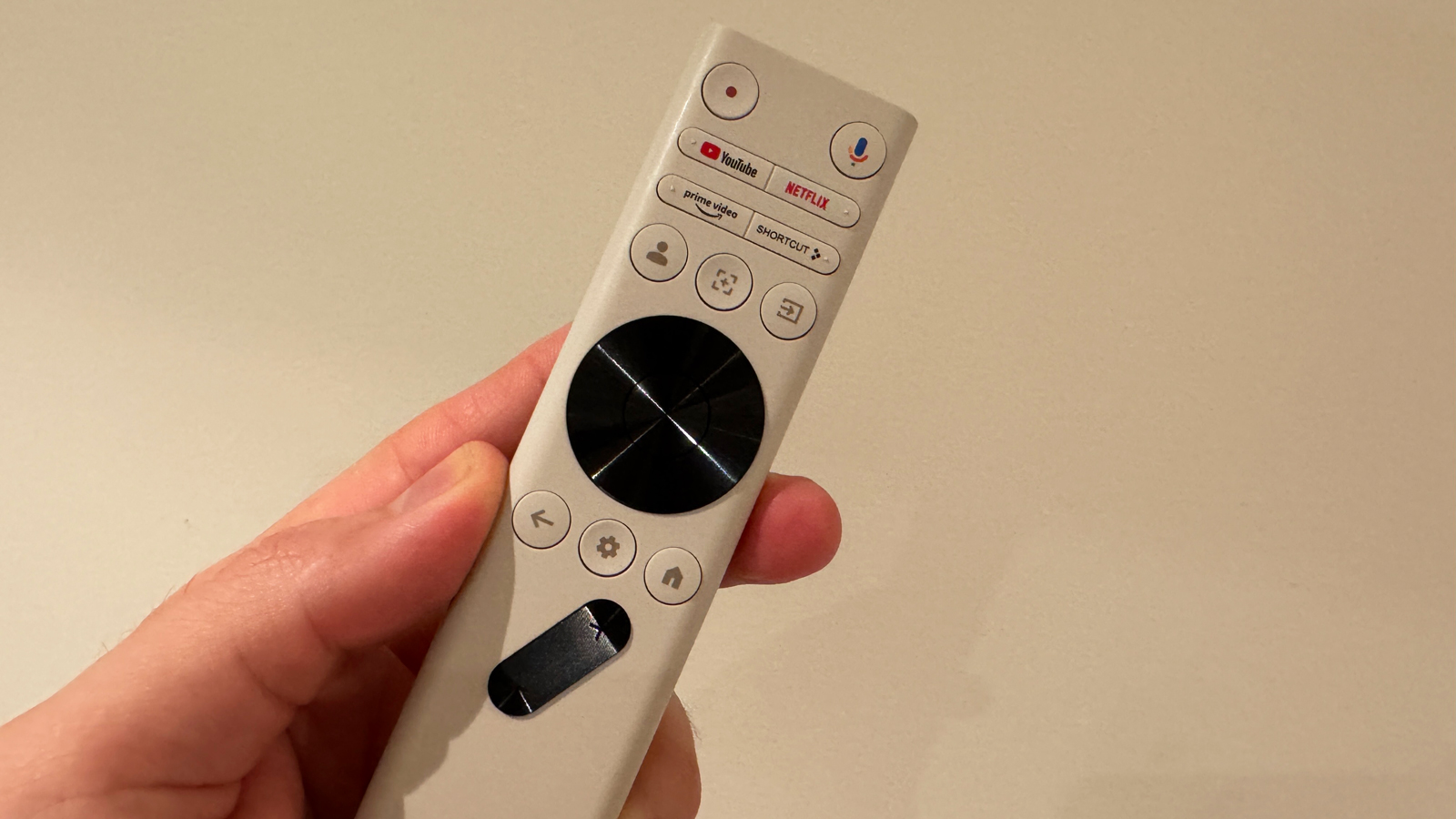
A remote control comes supplied with the XGIMI MoGo 3 Pro and two AAA batteries to power it. The remote feels good to hold, although I wasn’t enamored with the layout of the buttons. I found it required a bit of a learning process: the home button is in the bottom right for example and I’m used to it being more central on the majority of other remote controls I’ve used. I also occasionally pressed the Google Assistant button when I actually wanted to select ‘settings’. The remote control isn’t backlit, which can make things even trickier. Fortunately, the volume button is in an obvious and hard-to-miss place at the bottom, although I found the projector took a short while to register whenever I wanted to turn the volume up. Alternatively, because the XGIMI MoGo 3 Pro uses the Google TV operating system, you’re able to use your phone as a remote control via the Google Home app.
The single-chip DLP projector uses an LED light source, which XGIMI says is good for 25,000 hours of use. The company’s ISA 2.0 technology is onboard, which gives access to a number of especially useful setup tools, including automatic keystone correction, autofocus, obstacle avoidance, screen alignment and eye protection. Automatic screen adjustments are just a click away via a button on the remote control and you’re free to manually adjust settings further if you wish. I found autofocus to be the most successful of all the settings, while auto keystone correction delivered mixed results. The idea of this setting is that it will automatically realign the screen if you move the projector around. In most instances it worked fine, but I was occasionally forced to dive into the manual settings to get the screen aligned properly.
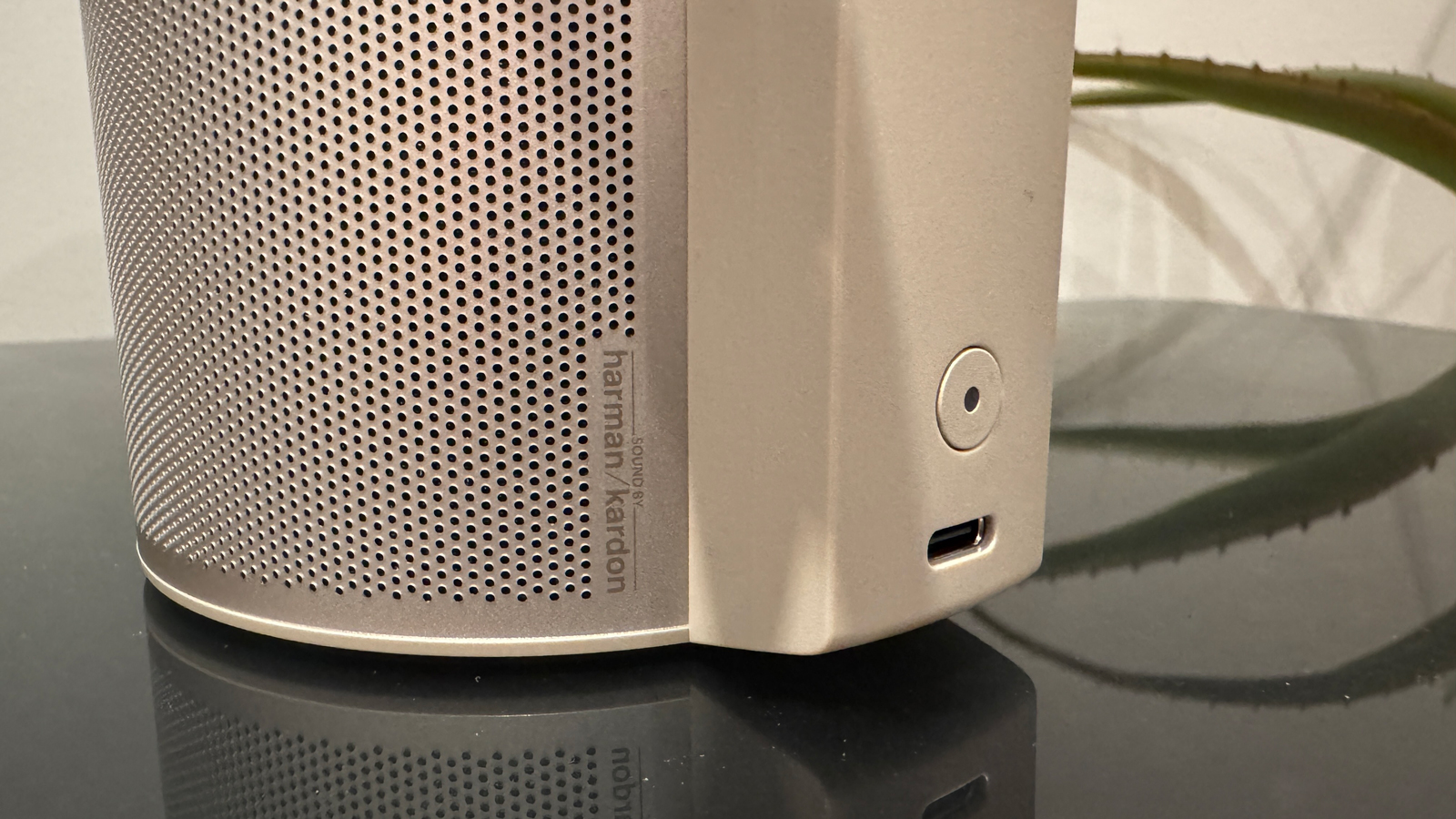
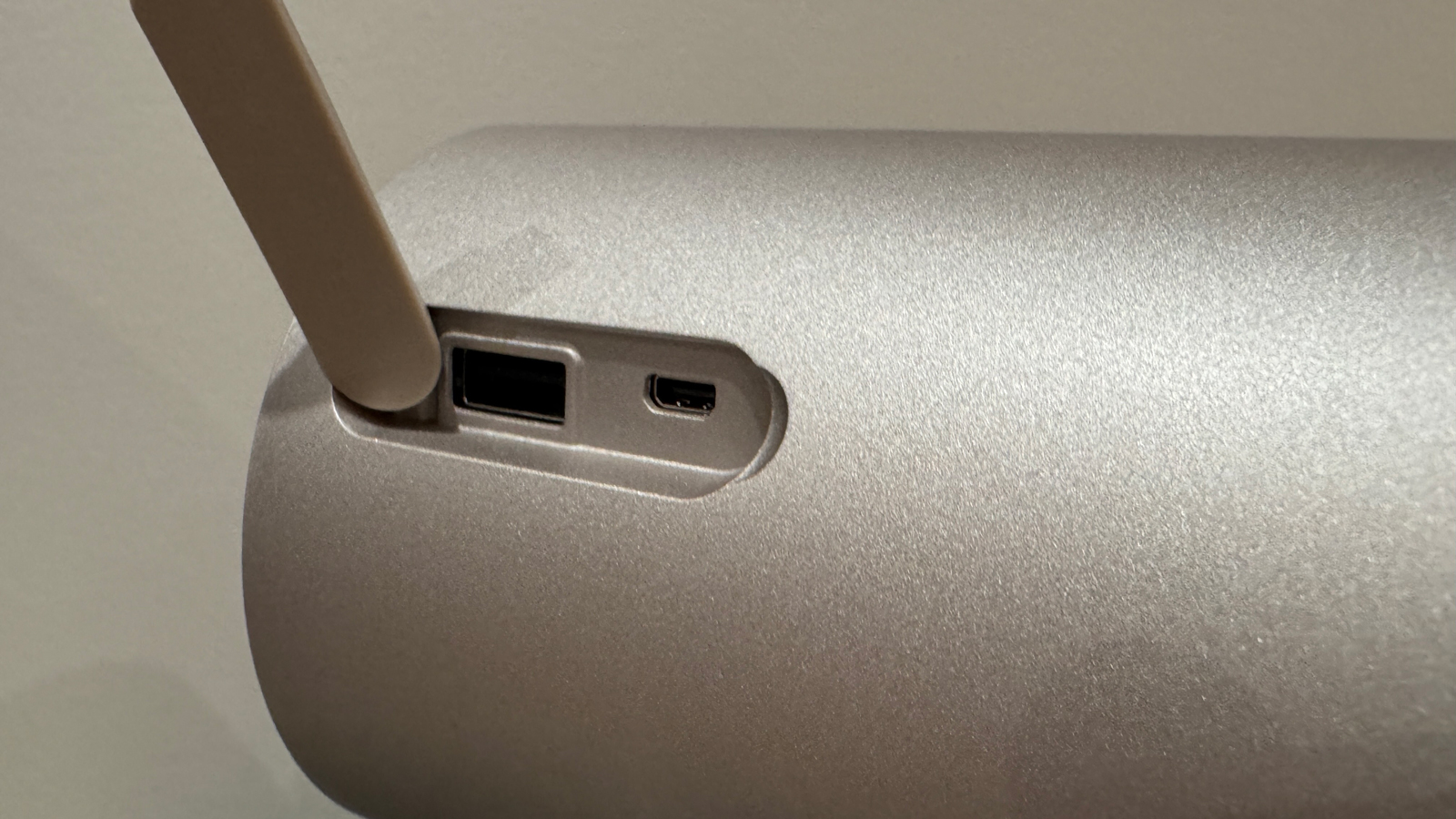
A small selection of accessories is available for the MoGo 3 Pro, including a PowerBase stand which has a built-in 20,000mAh battery for keeping the projector running when a power outlet isn’t accessible. XGIMI says it’s good for 2.5 hours of playback time when the projector’s brightness setting is set to Eco mode, which is just enough for movies such as Deadpool vs Wolverine, but too short for recent releases such as Wicked. When using the MoGo 3 Pro with just the PowerBase stand, the projector defaults to Eco mode. It can be changed, but it will impact battery life significantly.
A carry case is also available to keep it better protected during transport and a Creative Optical Filter can be placed over the MoGo 3 Pro’s lens to project a much larger image onto a wall. It’s intended to be used with the XGIMI Wall app to project underwater seascapes or immersive starry night sky images.
While the XGIMI MoGo 3 Pro features a Mini HDMI input for connecting to either an external sound system or a media streaming device, for the most part, you’ll likely be using the built-in apps to access content. In this regard, it’s good news as the MoGo 3 Pro uses Google TV, which provides access to a huge selection of apps and services. Perhaps most crucially, Netflix is supported. The ubiquitous streaming service doesn’t always play nicely with projector systems – a third-party app is required to access it on XGIMI's own Aura 2 for example, which uses the Android TV OS instead – so it’s great to see it front and center here. In a similar vein to the Samsung Freestyle projector, the XGIMI MoGo 3 Pro uses the older Wi-Fi 5 standard, which is more than capable enough to handle streaming, and didn’t cause any issues during my use.
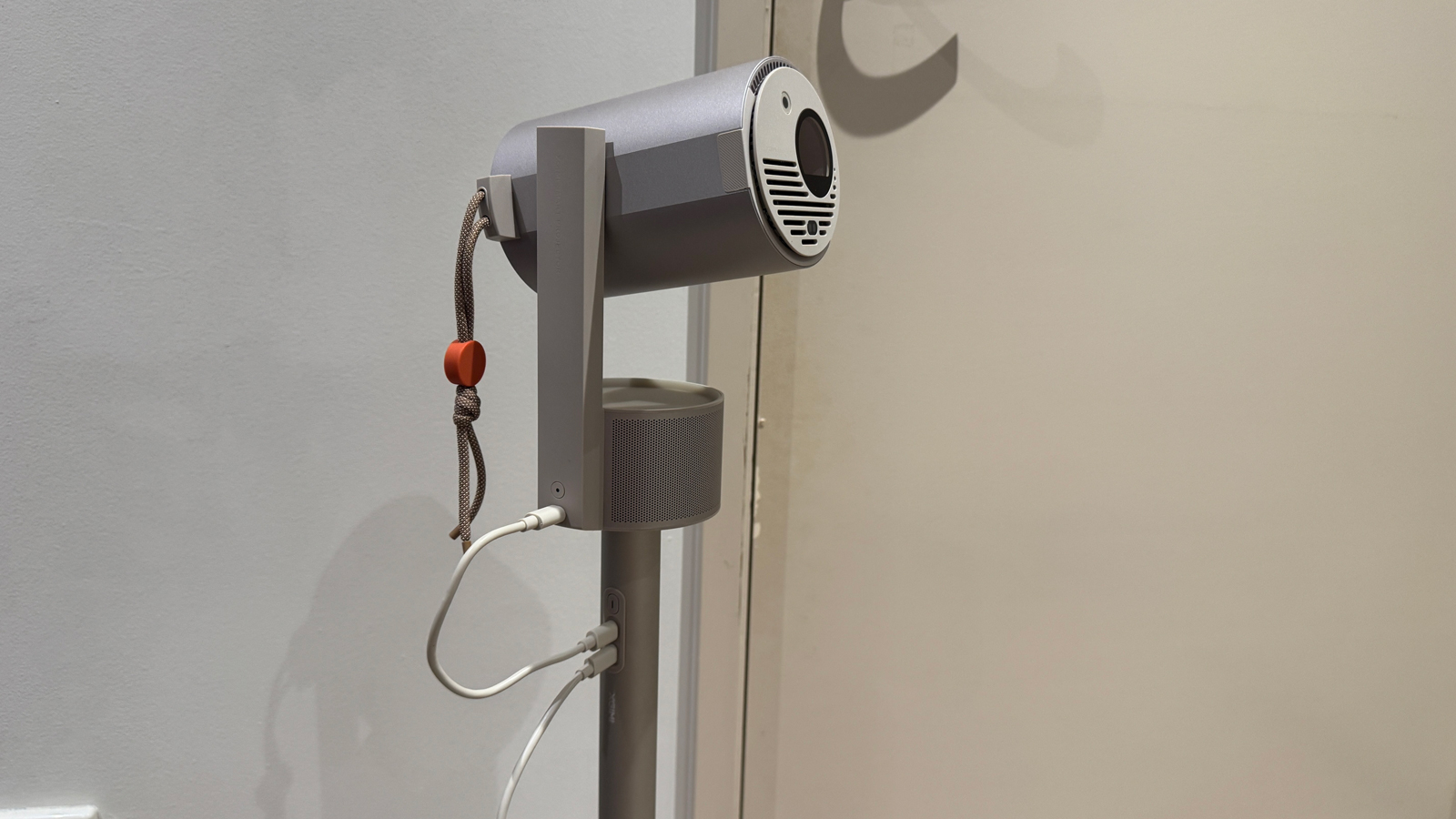
As a predominantly streaming-focused projector, connections on the MoGo 3 Pro are limited to micro HDMI. It would have been great to have received a cable or adaptor in the box, but alas, you’ll need to buy one if you want to connect an external gaming console, Blu-ray player, or other HDMI source. The micro HDMI connection does support HDMI-ARC, which allows you to connect it to a soundbar or other audio system, but there isn’t a 3.5mm audio output. You can also stream music to the projector via Bluetooth, or from the projector to a Bluetooth speaker thanks to dual Bluetooth support. I connected the projector to a Beats Pill to test this feature and experienced no obvious signs of audio delay. Android users can stream wirelessly via Google Cast, and AirPlay is supported too. XGIMI says in the support menus that you need to download the MagiCast app from the Google Play Store, but I searched for it and had no luck. I eventually found another app called AirMirror that allowed me to mirror the screen of my iPhone and stream music via AirPlay.
- Design & features score: 4 / 5
XGIMI MoGo 3 Pro review: Picture & sound quality
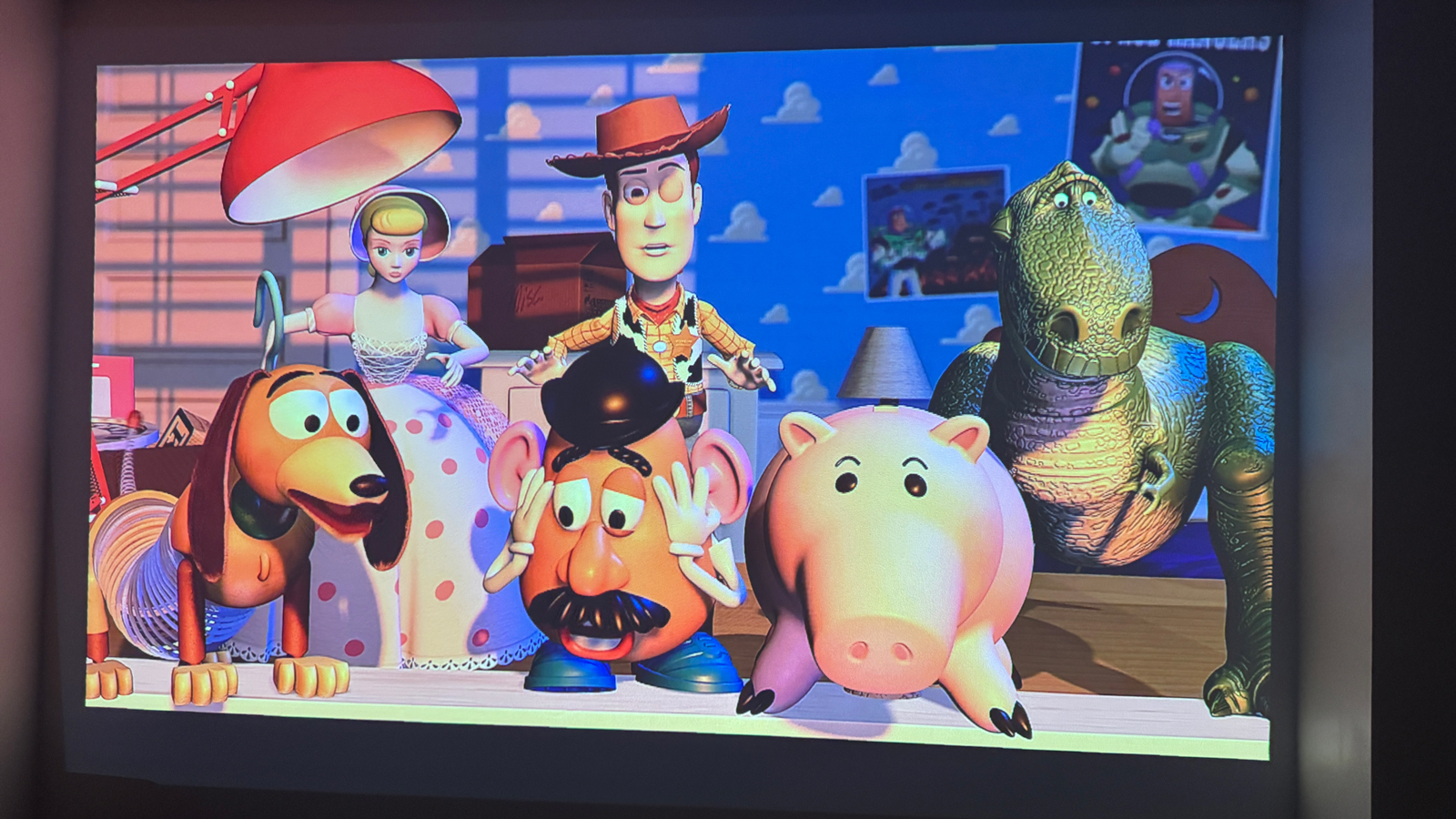
- Decent brightness even in ambient light conditions
- Impressive picture quality after some adjustments
- Sound is poor unless you turn it up to maximum
I went into my review of the XGIMI MoGo 3 Pro with limited expectations about the picture quality it would be able to produce, given its size and limited specs. I’d previously reviewed the XGIMI Aura 2 which produced a gorgeous and bright image, but this was expected since it has a 2300 ISO lumens rating. The MoGo 3 Pro’s 450 ISO lumens rating, therefore, suggested to me it would only really function at its best in the dark.
The XGIMI MoGo 3 Pro supports the HDR10 HDR format, which did provide some benefit to contrast in movie scenes with dark and bright elements. The company claims the projector supports 90% of the DCI-P3 color gamut. With Game mode activated, XGIMI says the MoGo 3 Pro has input lag of ≈ 27ms with auto keystone correction turned off and ≈ 60ms with it turned on.
I was pleasantly surprised to find that it held up well in a brighter room, with ambient sunlight coming in through a small opening. With the overhead lights turned on, it was totally unusable, but with just some sunlight creeping in, I was able to watch the projected image without too much fuss. You are able to project an image up to 200 inches in size, but XGIMI says that for best results you’ll want to stay within a boundary of 60 to 120 inches. For reference, the size of the image I was able to project onto my wall was around 80 inches, with the projector positioned around 200cm (80 inches) from the wall. XGIMI says the throw ratio of the MoGo 3 Pro is 1.2:1.
There are slightly different picture presets depending on whether you’re watching HDR or SDR content. The majority of my testing used HDR content, which presented Standard, Sport and Game presets. I left it on Standard most of the time as I felt this offered the best overall picture. I was surprised to not find a ‘Movie’ picture preset, especially given the fact this will likely be the projector’s main use.
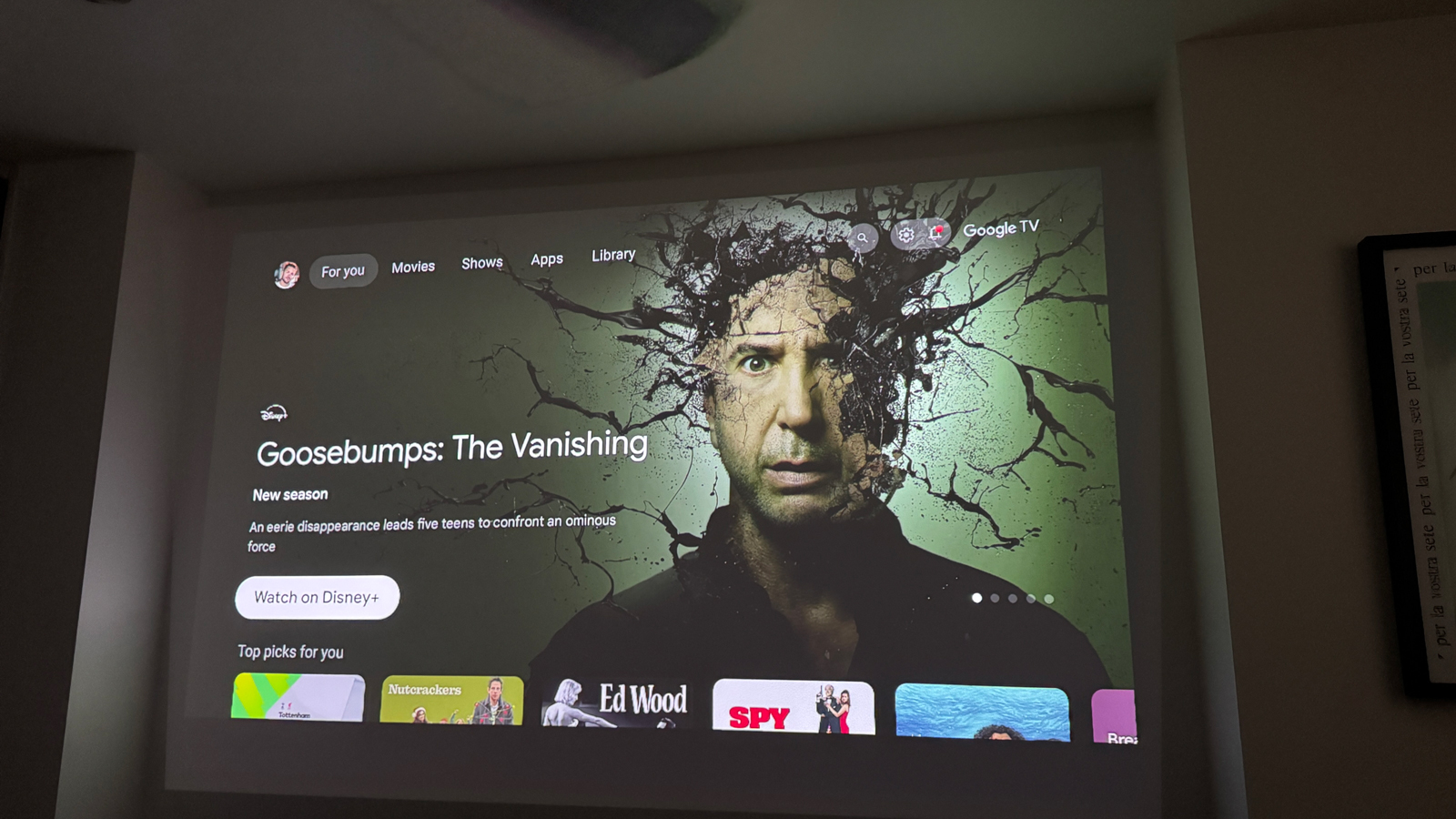
There are also three different brightness settings hidden within the menus: Standard, Eco and Performance. Again, I left the standard option selected the majority of the time. Eco mode limits brightness to 40% to help prolong battery life, and in darker rooms is perfectly fine to watch. If you’re watching in a brighter room, however, it doesn’t do as good a job.
Performance mode, meanwhile, introduces a blue tint to the image, which was a little peculiar... I was expecting this mode to ramp up the brightness further, but it seemed to have the opposite effect. When this mode is selected, the built-in cooling fan also gets turned up to 11 to the point where it’s clearly audible. It’s also worth noting that the performance brightness mode can only be enabled when the official power adapter is plugged directly into the projector unit. It won’t work with other power adapters or when connected to a power bank or the PowerBase stand.
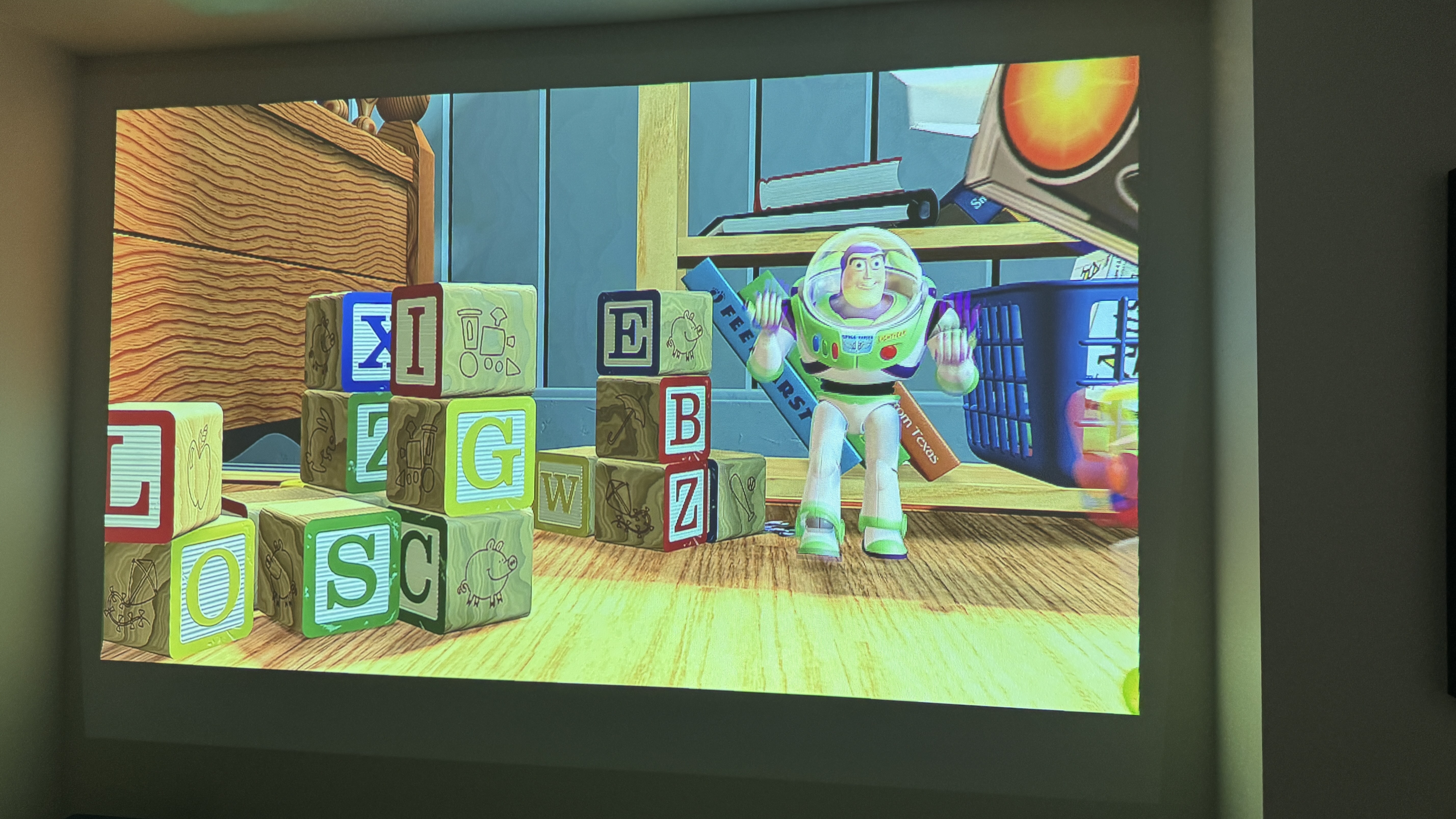
A stream of Alien: Romulus provided a good test of darker content for the MoGo 3 Pro and, considering its size, specs and price, I was pleased with the results when watching in a dimly lit room. It was able to unearth details in shadowy areas of a scene, while brighter areas such as lights had a satisfying pop.
I switched over to Toy Story on Disney Plus for its color-rich palette and generally bright scenes. The various reds, yellows, greens and blues were prominent, although not quite as vibrant as I’ve seen on TVs and higher-specced projectors. Nevertheless, it was still an enjoyable watch.
Seeing as though the XGIMI MoGo 3 Pro is designed to be taken out of the home with you, I set it up in my courtyard to see how it fared when being used outside. I will preface by saying I was projecting onto a dark grey wall, but it was also at night and so, despite the color of the wall coming through, I was still able to watch without trouble. I have no doubts that if you project onto a white wall, a sheet or even a portable projection screen, you will have no issues when watching movies on the road.

I also watched my favorite clip from The Incredibles and came across an issue with a fast-moving scene about two-thirds into the movie. When Dash is running through the forest away from Syndrome’s goons, the projector seemed to just crash and stopped playing the movie. Pressing the home button returned me to the main home page, but the same thing happened again when I attempted to watch the scene again. I wasn’t able to replicate this again with any other content, so it could be a one-off, isolated incident or due to a bug that can be fixed via a future firmware update.
The projector’s built-in speaker system is more difficult to be excited about. At full volume it does produce a spacious sound that will ultimately pass for whatever you’re watching. At lesser volumes however, it’s too quiet to do any real service and it lacks any real impact. Connecting a Bluetooth speaker is a fuss-free experience and can work wonders to boost the overall sound output, especially as I didn’t experience any signs of audio lag.
- Picture & sound quality score: 4 / 5
XGIMI MoGo 3 Pro review: Value
- Cheaper than its closest competitor
- Great features and performance
- Portable power options cost extra
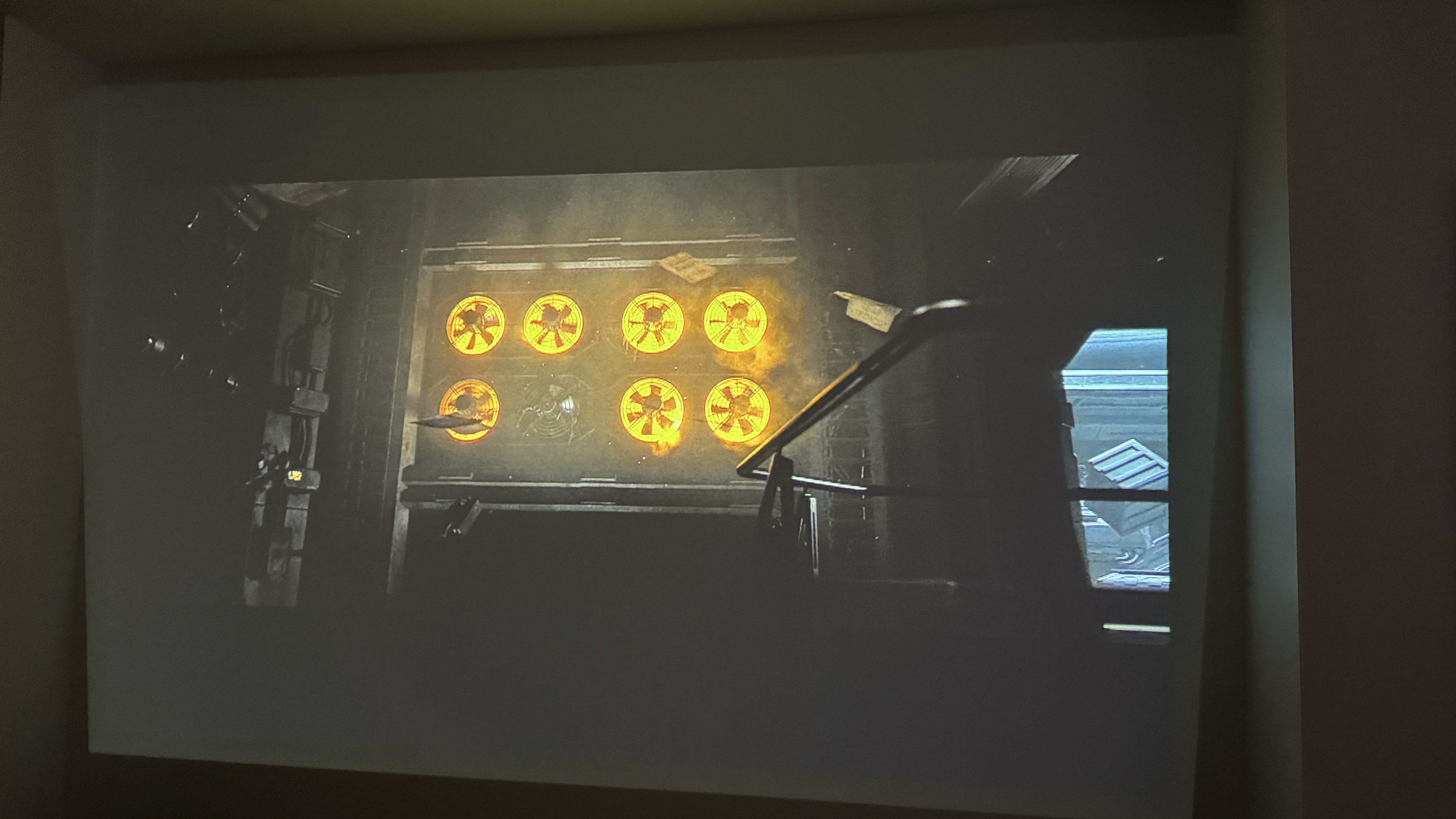
With a list price of $499 / £449 / AU$1,099, the MoGo 3 Pro offers enough to make it worth recommending. Its most obvious competitor, the Samsung The Freestyle, costs more in most markets yet has a similar specs list. Samsung’s offering doesn’t go quite as bright, but it does use the excellent Tizen operating system and it supports cloud gaming. Like the MoGo 3 Pro, there’s no built-in battery, but an optional base is available to make it truly portable.
To this end, I think the XGIMI's optional battery-powered base is the better choice as it’s also a tripod. Samsung’s option only raises the projector a few extra inches, so you may still need a table to put it on for optimal results. XGIMI's MoGo 3 Pro also has the added benefit of keeping the lens protected when it’s not in use. You will need to consider spending extra on the PowerBase stand (which is more cost effective to buy as a bundle with the projector) or a power bank that meets the required criteria.
If you can spend more and your only need for a portable projector is to use it in your garden, then almost any projector will do the job when plugged into an extension cord.
- Value score: 4 / 5
Should you buy the XGIMI MoGo 3 Pro?
| Attributes | Notes | Rating |
|---|---|---|
| Design & features | Compact, lightweight, good connectivity and a feature-packed smart TV interface | 4 / 5 |
| Picture & sound quality | Enough brightness to combat ambient light, which only improves in darker rooms. An external sound system is needed for a more cinematic experience | 4 / 5 |
| Value | Justifies its price tag and undercuts its closest competitor | 4 / 5 |
Buy it if...
You want a well-specced portable projector
The MoGo 3 Pro is especially portable thanks to a compact design and lightweight build. A lightweight battery-powered tripod base, or power from an external power bank, allows it to be used practically anywhere.
You plan to watch in dark conditions
The MoGo 3 Pro does well to combat ambient lighting in rooms, but when the sun goes down, it really comes into its own.
Don't buy it if...
You want 4K picture
The MoGo 3 Pro only supports up to full HD 1080p, which does mean picture quality can diminish if you supersize your projected image
You like to game at odd angles
27ms of input lag with auto keystone turned off is pretty decent, but this does mean you have to have the projector set up to directly face your projection surface.
Also consider
| Header Cell - Column 0 | XGIMI MoGo 3 Pro | Samsung The Freestyle 2nd Gen | LG CineBeam Q |
|---|---|---|---|
| Price: | $449 / £429 / AU$1,099 | $799 / £649 / AU$,1299 | $1,299 / £1,299 / AU$2,499 |
| Screen sizes supported: | 40 to 200 inches | 30 to 130 inches | 50 to 120 inches |
| Brightness (specified): | 450 ISO lumens | 230 ANSI lumens | 500 ANSI lumens |
| HDR support | HDR10 | HDR10+, HDR10, HLG | HDR10, HLG |
| Optical technology: | LED, DLP | LED, DLP | RGB laser DLP |
| Smart TV: | Google TV | Tizen | webOS |
| Connections: | Micro-HDMI, USB type-A, USB-C (power) | Micro-HDMI, USB-C (power) | HDMI, USB-C (display, power) |
Samsung The Freestyle 2nd Gen
It’s been mentioned throughout this review for good reason, Samsung’s portable projector looks incredibly similar and has a similar spec sheet. It fares better in the gaming arena, but its picture isn’t quite as bright. But it costs quite a bit more than the XGIMI, and rarely receives discounts.
Read our in-depth Samsung The Freestyle 2nd Gen review.
LG CineBeam Q
LG’s portable projector rocks a funky retro design and supports 4K content with HDR. Color performance is excellent and brightness levels are good for a portable model. It does cost a lot more, but you also get a lot more in return compared to the MoGo 3 Pro.
Read our full LG CineBeam Q review.
How I tested the Xgimi MoGo 3 Pro
- I used the projector in a range of light conditions
- Set it up inside and outside to test portability
- Watched a variety of dark and bright content
I tested the XGIMI MoGo 3 Pro at home over a period of about a month so I could experience it during various daytime living conditions. This meant multiple light sources, be it natural daylight or overhead lightbulbs, came into my testing room, at which point I rated the picture to see how well it performed.
The projector was tested against a white wall for the duration of my review, but also on a dark grey wall outside to assess its portable credentials. Both performed well and I could see noticeable differences before and after calibration.
I used a variety of content, including HDR and SDR content from a variety of streaming services.
My testing evaluates the projector's performance against other reviews my colleagues at TechRadar have conducted. I have been writing about and reviewing displays for five years.
Read more about how we test
[First published January 2025]

Max is a senior staff writer for TechRadar who covers home entertainment and audio first, NBN second and virtually anything else that falls under the consumer electronics umbrella third. He's also a bit of an ecommerce fiend, particularly when it comes to finding the latest coupon codes for a variety of publication. He has written for TechRadar's sister publication What Hi-Fi? as well as Pocket-lint, and he's also a regular contributor to Australian Hi-Fi and Audio Esoterica. Max also dabbled in the men's lifestyle publication space, but is now firmly rooted in his first passion of technology.
You must confirm your public display name before commenting
Please logout and then login again, you will then be prompted to enter your display name.
